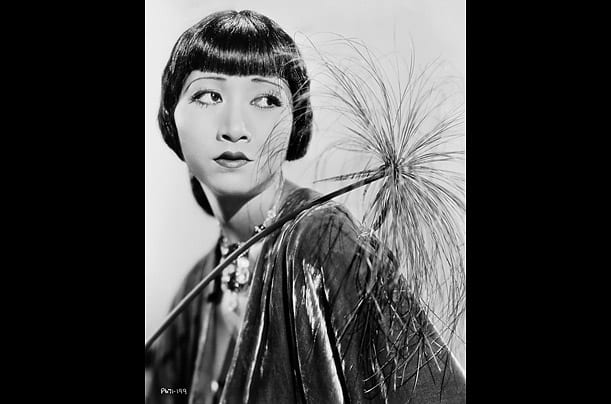Anna May Wong
ANNA MAY WONG
“For my parents and their generation, Anna May Wong was always an integral part of the family. Since she was the only female Chinese American film actress in Hollywood who actually became world famous, she eventually became an icon to the people of Chinese North America.”
– Anthony B. Chan, author of Perpetually Cool: The Many Lives of Anna May Wong (1905–1961).
New York Historical Society Museum & Library
Anna May Wong (Wong Liu Tsong) was born January 3, 1905 and raised in Los Angeles, California. She would become the first notable Chinese American star and global fashion icon.
Her grandfather emigrated from Taishan, China during the 1850s to flee social unrest, famine, and other socioeconomic challenges. Wong’s father, Sam Sing Wong, was born in 1858 in California and eventually married a second time to Gon Toy Lee. Together, they opened a laundry business in LA together. Wong grew up in a large family; the second of eight children. Her family lived and worked right on the outskirts of Chinatown, a center of commerce and politics. She recalled early accounts of discrimination,
“We tried to walk unconcernedly home from school, always with a larger and larger crowd of our tormentors around us shouting, “Chink, Chink, Chinaman. Chink, Chink, Chinaman.” Yanking our “pigtails” as they called our straight black braids of hair. Pushing us off the sidewalk into the street. Pinching us. Slapping us…. Every day was one of torture for us.” -Anna May Wong
From these incidences that occurred in public elementary school to the racial typecasting and discriminatory laws in Hollywood, Wong endured a lifetime of adjusting and overcoming these hardships.
Despite facing issues in her social life, she found fascination in all the motion pictures shot in Chinatown around the 1910’s and even booked a role as an extra. This ever-growing passion led her to self teach and practice the craft of acting. Eventually at 17, Wong landed her first major role and increasingly developed a fan base. Off screen, some deemed her the Chinese version of an American flapper girl. On screen, there was an apparent trend to the roles she booked; often the typecast of dragon lady or Mongol slave.

Despite her impressive rise to fame, casting directors were still unwilling to cast her in a romantic lead role. Many states had anti-miscegenation laws at the time that prevented Wong from sharing on screen kisses with actors of other races.
Wong would later venture out East to spend some time in China, where she still then felt like an outsider. In more ways than one, Anna May Wong felt too Chinese for Americans and too American for Chinese. Her struggles with identity were pivotal points of her career and life. However, her prominent influence can be attributed to the fact that she dealt with these racial issues and somehow, managed to navigate her way to success.
Sources:
Chan, Anthony B. Perpetually Cool: the Many Lives of Anna May Wong. Scarecrow, 2003.
“Anna May Wong (1905-1961).” Chinese American: Exclusion/Inclusion, 29 Oct. 2014, chineseamerican.nyhistory.org/anna-may-wong-1905-1961/.
